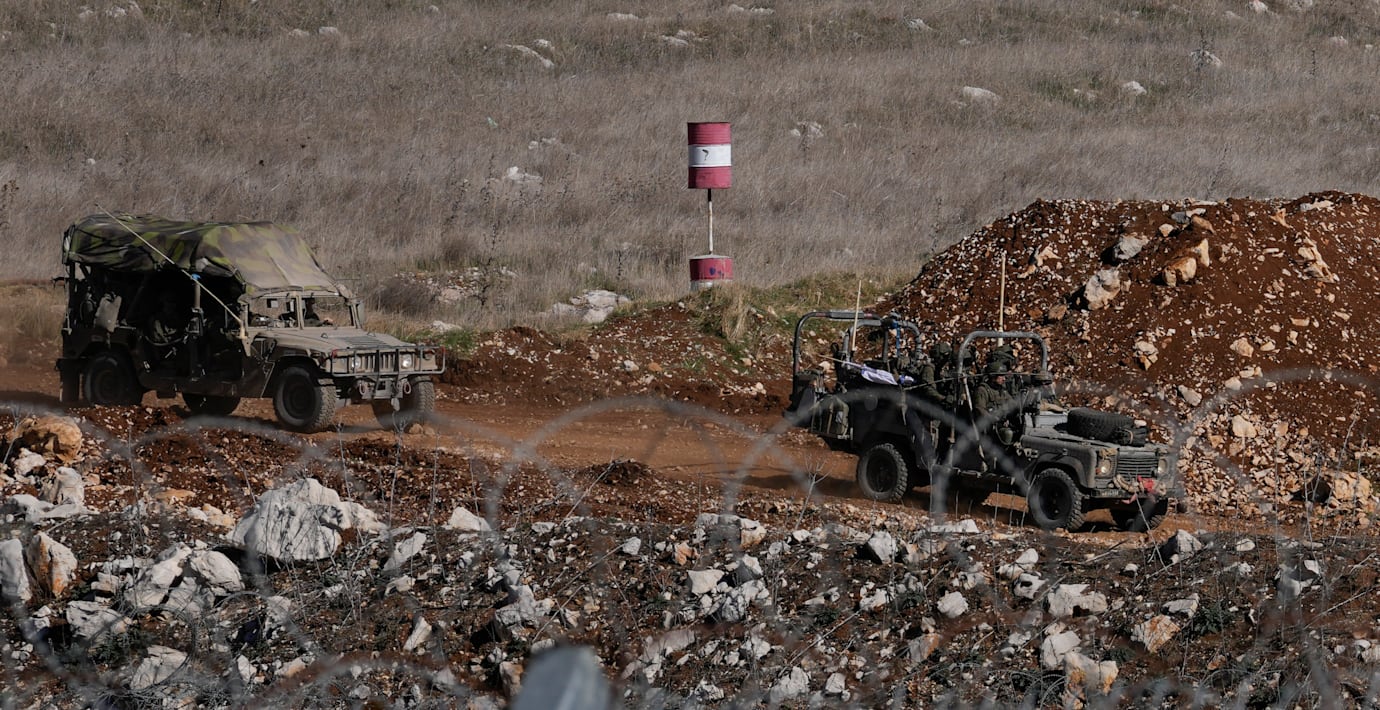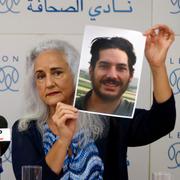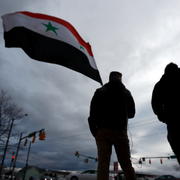
Israel ger grönt ljus för nya bosättningar på Golanhöjderna
Israels regering har fattat beslut om att utöka bosättningarna på ockuperade Golanhöjderna i Syrien. Det rapporterar Reuters.
Premiärminister Benjamin Netanyahu har agerat ”i ljuset av kriget och den nya fronten i Syrien”.
”Att stärka Golan stärker staten Israel, och det är särskilt viktigt vid den här tidpunkten”, skriver han i ett uttalande.
Ambitionen ska vara att dubblera den israeliska befolkningen i området. Drygt hälften av Golanhöjdens invånare är israeler.
Israel erövrade större delen av Golanhöjderna under sexdagarskriget 1967 och annekterade området 1981. Landet menar att området är israeliskt, men FN:s säkerhetsråd har slagit fast att området tillhör Syrien och kräver att Israel lämnar tillbaka det.
bakgrund
Golanhöjdarna
Wikipedia (en)
The Golan Heights (Arabic: هَضْبَةُ الْجَوْلَانِ, romanized: Haḍbatu l-Jawlān or مُرْتَفَعَاتُ الْجَوْلَانِ, Murtafaʻātu l-Jawlān; Hebrew: רמת הגולן, Ramat HaGolan, ), or simply the Golan, is a basaltic plateau at the southwest corner of Syria. It is bordered by the Yarmouk River in the south, the Sea of Galilee and Hula Valley in the west, the Anti-Lebanon mountains with Mount Hermon in the north and Wadi Raqqad in the east. Two thirds of the area was occupied by Israel following the 1967 Six-Day War and then effectively annexed in 1981 – an action unrecognized by the international community, which continues to consider it Israeli-occupied Syrian territory. In 2024 Israel occupied the remaining one third of the area.
The earliest evidence of human habitation on the Golan dates to the Upper Paleolithic period. During the Iron Age, it was home to biblical Geshur, which was later incorporated into Aram-Damascus. After Assyrian, Babylonian and Persian rule, the region came under the control of Alexander the Great in 332 BC. The Iturean kingdom and the Hasmonean dynasty briefly ruled the Golan, then the Roman Empire took control, first via the Herodian dynasty and then ruling directly. Afterwards, the Byzantine-aligned Ghassanid kingdom ruled the Golan from the 3rd century AD, until the region was annexed by the Rashidun Caliphate during the Muslim conquest of the Levant in the 7th century. The Umayyad Caliphate, Abbasid Caliphate, Fatimid Caliphate and the Mamluk Sultanate succeeded one another in control of the Golan, before the region was conquered by the Ottoman Empire In the 16th century. Within Ottoman Syria, the Golan was part of the Syria Vilayet. The area later became part of the French Mandate in Syria and the State of Damascus. When the mandate terminated in 1946, it became part of the newly independent Syrian Arab Republic, spanning about 1,800 km2 (690 sq mi).
Since the Six-Day War of 1967, the western two-thirds of the Golan Heights has been occupied and administered by Israel, whereas the eastern third remains under the control of Syria. Following the war, Syria dismissed any negotiations with Israel as part of the Khartoum Resolution at the 1967 Arab League summit. Construction of Israeli settlements began in the remainder of the territory held by Israel, which was under a military administration until the Knesset passed the Golan Heights Law in 1981, which applied Israeli law to the territory; the move has been described as an annexation. The Golan Heights Law was condemned by the United Nations Security Council in Resolution 497, which stated that "the Israeli decision to impose its laws, jurisdiction, and administration in the occupied Syrian Golan Heights is null and void and without international legal effect".
After the onset of the Syrian civil war in 2011, control of the Syrian-administered part of the Golan Heights was split between the state government and Syrian opposition forces, with the United Nations Disengagement Observer Force (UNDOF) maintaining a 266 km2 (103 sq mi) buffer zone in between to help implement the Israeli–Syrian ceasefire across the Purple Line. From 2012 to 2018, the eastern half of the Golan Heights became a scene of repeated battles between the Syrian Army, rebel factions of the Syrian opposition (including the United States-backed Southern Front) as well as various jihadist organizations such as al-Nusra Front and the Islamic State of Iraq and the Levant-affiliated Khalid ibn al-Walid Army. In July 2018, the Syrian government regained full control over the eastern Golan Heights. In December 2024, after the fall of the Assad regime, Israel occupied the rest of the Golan Heights as a "temporary defensive position".
Omni är politiskt obundna och oberoende. Vi strävar efter att ge fler perspektiv på nyheterna. Har du frågor eller synpunkter kring vår rapportering? Kontakta redaktionen



